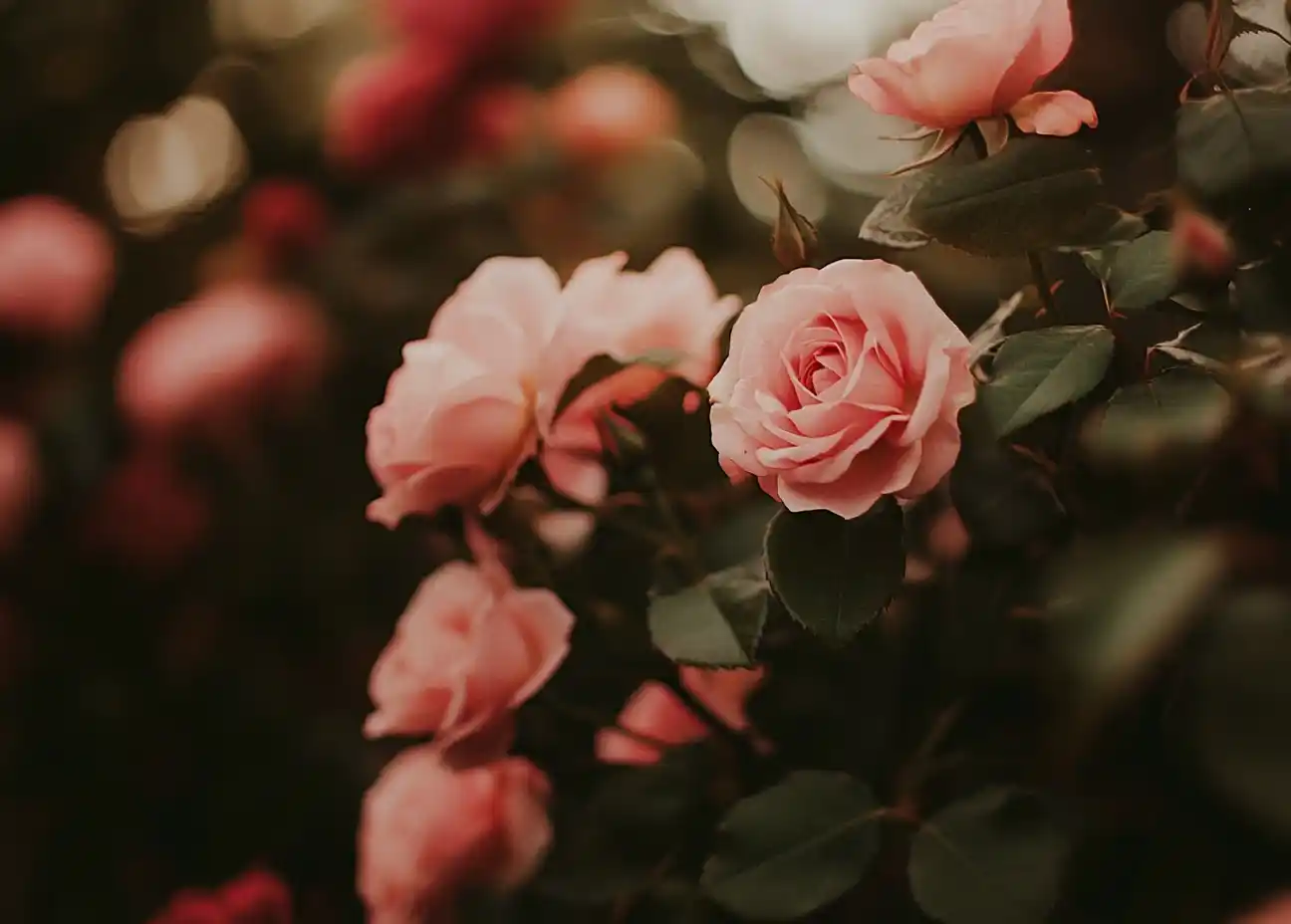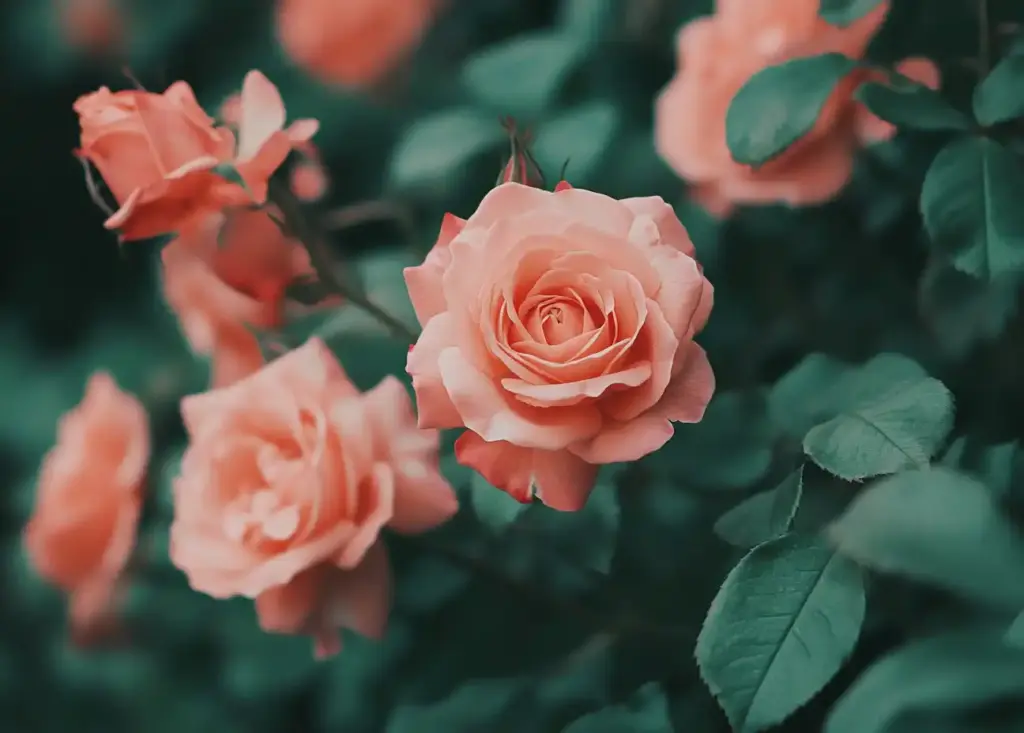If you’re looking for a vibrant, low-maintenance rose that blooms from spring to frost, look no further than the beloved ‘Knock Out’ rose. These hardy shrubs are a favorite among gardeners for their colorful display, disease resistance, and fuss-free care. Whether you’re planting in a flower bed, a border, or even in containers, Knock Out roses offer stunning beauty without the typical challenges of traditional rose gardening. In this guide, you’ll learn how to plant, care for, and keep your Knock Out roses thriving all season long.
What Makes ‘Knock Out’ Roses Special?
What sets ‘Knock Out’ roses apart from other rose varieties is their incredible blend of beauty and resilience. Introduced in the early 2000s, these hybrid shrub roses quickly gained popularity due to their continuous blooming, resistance to common rose diseases, and low-maintenance nature.
Here’s why gardeners love them:
- Long Blooming Season: From early spring until the first hard frost, these roses keep flowering, offering an ever-changing splash of color in your landscape.
- Disease Resistance: Knock Out roses are naturally resistant to black spot and powdery mildew, two of the most frustrating problems for rose lovers.
- Low Maintenance: No need to fuss with constant spraying or deadheading. These roses thrive with minimal care.
- Variety of Colors and Forms: Available in single or double blooms and colors ranging from classic red to soft yellow, peach, pink, and even coral tones.
Whether you’re a beginner gardener or a seasoned green thumb, Knock Out roses offer a reliable, stunning addition to your garden beds, borders, or even patio containers.
Planting Guide: When and Where to Plant
Getting your Knock Out roses started in the right place at the right time is key to a garden full of vibrant blooms.
🕰️ When to Plant
- Early Spring is the best time to plant—after the last frost but before new growth begins. This gives the plant time to establish roots before the summer heat kicks in.
- Fall planting is also an option, as long as it’s done at least six weeks before your first expected frost. This allows the roots to settle before winter dormancy.
📍 Where to Plant
- Full Sun is Essential: Knock Out roses need at least 6 hours of direct sunlight daily. The more sun they get, the more profusely they’ll bloom.
- Well-Drained Soil: Avoid soggy soil, which can lead to root rot. If your soil holds water, consider raised beds or amending it with compost and sand.
- Air Circulation: Choose a location with good airflow to help prevent fungal diseases and keep the foliage dry.
🌱 Quick Planting Tips:
- Space plants 3–4 feet apart to allow for their mature spread.
- Dig a hole twice as wide and just as deep as the root ball.
- Mix in compost or organic matter to enrich the soil.
- Water deeply after planting to help settle the roots.
Caring for ‘Knock Out’ Roses

Once your Knock Out roses are in the ground, they’re surprisingly easy to maintain — but a little attention goes a long way in keeping them healthy and blooming beautifully.
☀️ Light Requirements
- Knock Out roses thrive in full sun — aim for 6 to 8 hours of direct sunlight daily.
- Morning sun is especially important to dry off dew and prevent fungal issues.
- In very hot climates, a bit of afternoon shade can protect them from scorching.
🌱 Soil Preferences
- They’re not too picky, but they prefer slightly acidic to neutral soil (pH 6.0 to 7.0).
- Soil should be well-drained to prevent root rot.
- Improve poor soil with organic compost or a rose-specific soil mix.
- A layer of mulch helps retain moisture and adds nutrients as it breaks down.
💧 Watering Tips
- Water deeply at the base of the plant rather than from above — wet leaves = higher risk of disease.
- Newly planted roses need consistent watering (about 2–3 times per week).
- Established roses are fairly drought-tolerant but still benefit from weekly deep watering, especially during dry spells.
- Early morning is the best time to water.
🌡️ Temperature & Humidity
- These roses are both cold-hardy (down to about 10°F) and heat-tolerant.
- In colder zones, mulch around the base in late fall to protect roots.
- Avoid overcrowding plants to encourage air flow and reduce humidity-related disease risks.
🌼 Fertilizing Schedule
- Use a balanced rose fertilizer or one specifically labeled for blooming shrubs.
- Apply every 4–6 weeks during the growing season, starting in early spring.
- Stop fertilizing in late summer to help plants prepare for winter dormancy.
Pruning and Grooming for More Blooms
One of the best things about ‘Knock Out’ roses is how forgiving they are when it comes to pruning. In fact, they bloom on new growth, so regular pruning actually encourages more flowers!
✂️ When to Prune
- Late winter to early spring is ideal — just as you see new buds forming but before full leaf-out.
- You can also lightly prune throughout the season to shape the plant or remove damaged branches.
🔪 How to Prune
- Wear thick gloves — Knock Out roses are known for their thorns!
- Cut back the plant by one-third to one-half its height in early spring.
- Always prune above a leaf node facing outward to encourage outward growth.
- Use clean, sharp shears to make clean cuts and avoid damage.
🌸 Deadheading (Optional, but Helpful)
- Unlike many roses, Knock Outs don’t require deadheading to keep blooming.
- However, removing faded blooms regularly (about once a week) keeps the plant looking tidy and stimulates fresh growth and new buds.
- Leaving old blooms may lead to rose hips, which can slow down blooming.
🧹 Grooming Tips
- Remove any crossing or inward-facing branches to improve airflow and reduce disease.
- Clip away any yellowing or diseased foliage immediately.
Proper pruning not only boosts blooms but also helps maintain a compact, attractive shape and reduces the risk of pests and diseases.
Common Pests and Problems (and How to Handle Them)

While Knock Out roses are more disease- and pest-resistant than most traditional roses, they’re not totally immune. Here’s how to spot and fix the most common issues.
🐛 Common Pests
1. Spider Mites
- Signs: Speckled, bronzed leaves or fine webbing on the undersides.
- Solution: Spray foliage with a strong stream of water or use insecticidal soap or horticultural oil.
2. Rose Slugs (Sawfly Larvae)
- Signs: Leaves look like they have tiny “windows” or are skeletonized.
- Solution: Spray undersides of leaves with neem oil or insecticidal soap.
3. Japanese Beetles
- Signs: Large holes in leaves and flower petals.
- Solution: Use neem oil early in the morning (not on flowers—neem is toxic to bees) or try manual removal.
🍂 Common Diseases
1. Powdery Mildew
- Signs: White, powdery coating on leaves.
- Solution: Improve air circulation, water at the base, and remove affected leaves. Use a fungicidal spray if needed.
2. Black Spot
- Signs: Dark spots with yellowing leaves.
- Solution: Prune affected areas and apply rose-safe fungicides.
3. Rose Rosette Disease (RRD)
- Signs: Twisted, contorted stems and unusual red growth.
- Cause: Spread by tiny eriophyid mites.
- Solution: Unfortunately, there’s no cure. The entire plant must be removed and destroyed to prevent spreading.
🛡️ Prevention Tips
- Water early in the day to avoid wet foliage overnight.
- Mulch to prevent splash-up of soil-borne diseases.
- Space plants properly to encourage airflow.
- Perform weekly walk-throughs to spot issues early.
A little vigilance goes a long way — and most problems are treatable if caught early!
Overwintering and Seasonal Protection
Although Knock Out roses are bred to be hardy, a little extra TLC during the colder months helps them return stronger and more vibrant in spring.
🧤 In-Ground Plants
- Mulch Matters: Before the first hard frost, apply a 2–3 inch layer of organic mulch (like straw, pine needles, or shredded leaves) around the base of the plant. This helps insulate the roots from freeze-thaw cycles.
- Stop Fertilizing: Cease feeding the roses by late summer, so they begin to go dormant naturally.
- Prune Lightly (If Needed): Avoid heavy pruning in fall. You can lightly trim to remove dead or broken branches, but save the major cuts for late winter or early spring.
🪴 Container-Grown Roses
- Bring Them In: Move containers to a sheltered spot, like an unheated garage, shed, or covered porch, once temperatures drop below 20°F.
- Wrap for Warmth: Insulate pots with burlap, bubble wrap, or foam to prevent root freeze.
- Keep Soil Slightly Moist: Water occasionally — just enough to keep the roots from drying out completely.
🌀 Transitioning Back in Spring
- In early spring, remove mulch gradually as temperatures warm and watch for new growth.
- Resume regular watering and begin fertilizing once new leaves appear.
With just a few steps, your Knock Out roses can easily make it through winter and come back ready to bloom again!
Growing ‘Knock Out’ Roses in Containers
If you’re short on space or just want a movable splash of color, container gardening with Knock Out roses is a fantastic option. These roses adapt well to pots as long as they get the right care.
🪴 Choosing the Right Container
- Size matters: Pick a pot that’s at least 18–24 inches wide and deep. Larger containers help insulate roots and allow room for growth.
- Drainage is crucial: Ensure your pot has good drainage holes to prevent waterlogged soil.
🧱 Potting Mix and Setup
- Use a high-quality potting mix, ideally one labeled for roses or flowering shrubs.
- Mix in a bit of compost or slow-release fertilizer to give your rose a strong start.
- Place a layer of gravel or broken pottery at the bottom of the pot to aid drainage.
💧 Container Care Tips
- Watering: Containers dry out faster than ground soil. Check moisture daily in summer — water deeply when the top inch feels dry.
- Fertilizing: Feed monthly with a rose-specific fertilizer or use a slow-release formula every 6–8 weeks.
- Sunlight: Position your pot in a full-sun spot — at least 6 hours of sunlight a day.
❄️ Wintering Potted Roses
- Move pots to a protected area during winter as outlined in the previous section.
- Don’t forget to water occasionally — dormant roses still need moisture to stay alive.
With the right pot and routine, container-grown Knock Out roses can be just as prolific and beautiful as their in-ground counterparts.
Popular Knock Out Varieties to Consider
Over the years, the Knock Out family has expanded to include several beautiful options beyond the classic red. Each variety shares the same toughness and long blooming period but brings a unique look to the table.
🌞 ‘Sunny’ Knock Out
- Color: Starts bright yellow and fades to a creamy white.
- Fragrance: Light citrus scent.
- Best For: Brightening up borders or mixing with darker-colored roses.
🍑 ‘Peachy’ Knock Out
- Color: Coral pink blooms with yellow centers.
- Foliage: Glossy deep green.
- Vibe: A soft, romantic addition to any garden bed.
🔥 ‘Orange Glow’ Knock Out
- Color: Rich orange with hints of coral and pink.
- Fragrance: Lightly scented.
- Standout Feature: Adds a bold pop of warmth to any landscape.
🌸 ‘Blushing’ Knock Out
- Color: Pale pink petals with subtle blue-tinted green foliage.
- Mood: Elegant and delicate, great for cottage gardens.
🐝 ‘Easy Bee-zy’ Knock Out
- Color: Cheerful yellow blooms.
- Fragrance: Slight citrus smell.
- Bonus: Bee-friendly and vibrant — great for pollinator gardens.
🌺 ‘Petite’ Knock Out
- Size: Compact — stays under 2 feet tall.
- Color: Classic red.
- Perfect For: Containers or small-space gardens.
These varieties let you mix and match colors while maintaining the signature ease and hardiness of Knock Out roses. Whether you want a soft pastel look or a vibrant explosion of color, there’s a Knock Out for that.
FAQs and Final Tips
❓How long do Knock Out roses live?
With proper care, these roses can thrive for decades! Regular pruning, watering, and occasional feeding will keep them healthy year after year.
❓Do Knock Out roses need to be deadheaded?
Technically, no — they’re self-cleaning. But removing spent blooms every week or so encourages more flowers and keeps the plant tidy.
❓Can they grow in partial shade?
They tolerate light shade, but for best bloom production and disease resistance, full sun (6+ hours) is ideal.
❓Are they deer-resistant?
Not really. Deer may snack on the buds, especially in spring. Consider using deer repellents if browsing becomes a problem.
❓Can I grow them alongside other plants?
Absolutely! Knock Out roses pair beautifully with:
- Lavender
- Salvia
- Catmint
- Ornamental grasses
- Low-growing evergreens
Just give them enough space and sunlight.
🌟 Final Tips for Success
- Inspect weekly: Catch issues early before they become problems.
- Mulch annually: Helps with water retention and weed control.
- Fertilize consistently: But don’t overdo it — every 4–6 weeks in growing season is plenty.
- Enjoy the show: Few shrubs offer so much color for so little effort!


